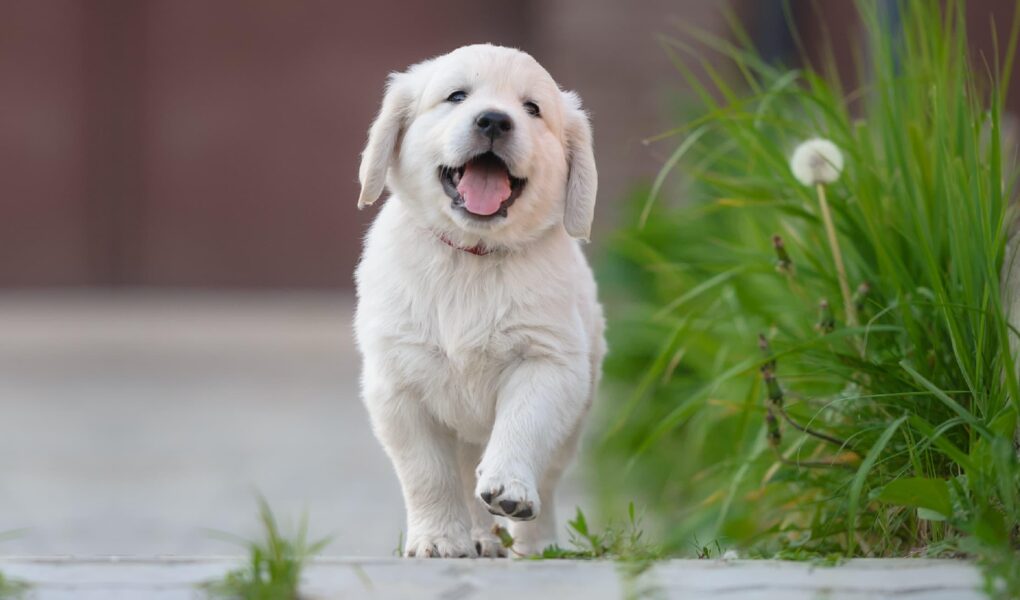Introduction: The Tug of War Begins – Understanding Puppy Leash Pulling
Picture this: you’re out for a leisurely stroll, the sun shining, birds singing, and your charming puppy at your side. But suddenly, that idyllic scene is interrupted as your little bundle of joy transforms into a tug-of-war champion, pulling vehemently at the leash as if it’s a game of chase. Whether it’s an eager dash towards a new scent or a spirited attempt to greet every passerby, leash pulling can quickly turn a peaceful walk into a frustrating ordeal. This common challenge faced by dog owners often stems from a combination of natural instincts and a lack of training. In this article, we’ll explore the reasons behind this exuberant behavior, share effective training techniques, and offer insights to help turn your daily walks into moments of joy rather than struggle. Join us as we delve into the world of puppy leash pulling and discover how to transform your outings into enjoyable adventures.
Table of Contents
- Understanding the Root Causes of Leash Pulling in Puppies
- Effective Training Techniques to Curb Pulling Behavior
- Choosing the Right Equipment for a Smooth Walking Experience
- Building Positive Associations Through Leash Training Activities
- Q&A
- To Conclude
Understanding the Root Causes of Leash Pulling in Puppies
When it comes to leash pulling, understanding the underlying reasons can significantly improve your training efforts. Puppies are naturally curious and energetic creatures, eager to explore their surroundings. This curiosity often manifests as pulling, which can be both frustrating for owners and overwhelming for the puppies themselves. The instinct to lead the way can come from several factors:
- Excitement: Puppies may pull on the leash due to their enthusiastic approach to new sights and smells.
- Fear or Anxiety: Some puppies might feel insecure in certain environments, prompting them to pull ahead for comfort.
- Lack of Training: Without proper leash training, puppies may not understand the desired behavior while on walks.
Each of these reasons points to a need for understanding and patience. It’s essential for a puppy to learn that they can still explore while remaining close to their owner. Establishing a consistent training routine can aid in reducing leash pulling. Consider these approaches to address the root causes:
| Cause | Training Solution |
|---|---|
| Excitement | Use treats to reward following you instead of pulling ahead. |
| Fear | Gradually expose your puppy to new environments to build confidence. |
| Lack of Training | Practice ‘heel’ and ‘stop’ commands regularly to reinforce good behavior. |
Effective Training Techniques to Curb Pulling Behavior
Training a puppy not to pull on the leash requires patience and consistency. One highly effective method is utilizing positive reinforcement, rewarding your puppy with treats, praise, or toys whenever they walk calmly beside you. This encourages them to associate loose-leash walking with positive outcomes. Incorporate techniques such as the “stop-and-go” method: whenever your puppy pulls, stop walking and wait until they return to your side before resuming. This simple adjustment shifts their focus back to you, reinforcing the idea that pulling does not lead to progress.
Additionally, practicing focus exercises can significantly help curb pulling behavior. Teach your puppy to maintain eye contact with you while on the leash, using your voice or a treat to encourage their attention. Consistent practice of the “look at me” command during walks can create a stronger connection between you and your puppy, making it less likely for them to wander ahead. Incorporating short training sessions in different environments will also help your puppy generalize these skills, ultimately leading to more enjoyable and controlled walks.
| Technique | Description |
|---|---|
| Positive Reinforcement | Reward calm behavior with treats or praise. |
| Stop-and-Go | Stop walking when pulling occurs; resume only when the puppy returns to your side. |
| Focus Exercises | Train your puppy to maintain eye contact while walking. |
Choosing the Right Equipment for a Smooth Walking Experience
When it comes to ensuring a pleasant walking experience with your puppy, the right equipment can make all the difference. Leashes come in various types—each designed to cater to specific needs and behaviors. Consider options like:
- Standard Leash: Perfect for everyday walks, providing gentle control.
- Retractable Leash: Offers more freedom for exploration, although it might lead to more pulling.
- Harness: Reduces strain on your puppy’s neck and deters pulling, making it a safer choice.
- Head Halter: Helps control pulling more effectively, great for training.
Additionally, the right collar can enhance comfort and functionality. Some collars are specifically designed for puppies prone to pulling or jumping. It’s essential to also consider your puppy’s size and strength when choosing their walking gear. Below is a quick comparison table to help you decide:
| Equipment | Best For | Advantages |
|---|---|---|
| Standard Leash | All breeds | Simple, easy to use |
| Harness | Puppies that pull | Reduces strain; comfortable |
| Head Halter | Training | Effective control over pulling |
| Retractable Leash | Curious dogs | Freedom of movement |
By carefully selecting the right gear based on your puppy’s age, breed, and behavior, you can transform your walks from a tug-of-war into a joyful bonding experience.
Building Positive Associations Through Leash Training Activities
When it comes to teaching your puppy proper leash manners, the key lies in creating enjoyable experiences that foster trust and reduce frustration. One engaging method is to incorporate games into your walks. These activities not only build positive associations with the leash but also strengthen your bond. Consider the following ideas:
- Tug-of-war – Use the leash as a gentle tug toy during breaks. This encourages your puppy to see the leash as something fun rather than a restraining device.
- Hide and Seek – Let your puppy explore while you hide and call out for them, rewarding them with praise and treats when they find you.
- Follow the Leader – Take turns leading the walk, allowing your puppy to take charge for short distances to boost their confidence.
Consistency during these activities will help in building a calming routine, making your puppy more eager to walk alongside you. In addition to playful activities, rewarding calm behaviors is crucial. Ensure to have treats on hand, and consider creating a simple reinforcement chart to track your successes:
| Puppy Behavior | Reward | Notes |
|---|---|---|
| Walking beside you | High-value treat | Use this often to reinforce |
| Not pulling on the leash | Praise & pets | Verbal reinforcement is important |
| Maintaining attention | Favorite toy | Keep them engaged throughout the walk |
Q&A
Q&A: Tackling Puppy Pulling on Leash
Q1: What is the primary reason puppies pull on their leashes?
A1: Puppies are naturally curious and energetic creatures. Pulling on the leash often stems from their eagerness to explore their surroundings, meet other dogs, or simply burn off pent-up energy. This instinctual behavior can be amplified if they haven’t learned leash etiquette yet.
Q2: Is pulling on the leash a behavior that can be corrected?
A2: Absolutely! Leash pulling is a common behavior that many dog owners face, but with patience, consistency, and the right training techniques, it’s completely manageable. Puppies can learn to walk politely on a leash with practice.
Q3: What are some effective training techniques to discourage leash pulling?
A3: Here are a few techniques to consider:
– Stop and Go: When your puppy pulls, come to a halt. Wait until they return to your side before continuing your walk. This teaches them that pulling doesn’t get them where they want to go.
– Rewarding Calmness: Use treats and praise to reward your puppy when they walk beside you. Positive reinforcement helps them associate walking nicely with something enjoyable.
– Change of Direction: If your puppy starts to pull, change direction suddenly. This keeps them engaged and teaches them to keep an eye on you.
- Use the Right Equipment: Consider using a front-clip harness or head collar designed to reduce pulling. These tools can help give you more control while your puppy learns.
Q4: How important is consistency in training?
A4: Consistency is key! Puppies thrive on routine and clear expectations. Make sure all family members use the same commands and techniques during walks. The more consistent you are, the better your puppy will understand the desired behavior.
Q5: Are there age considerations for starting leash training?
A5: It’s never too early to start leash training! Puppies can begin to learn leash manners as soon as they are comfortable wearing a collar or harness. Starting early establishes good habits before they have a chance to develop pulling behaviors.
Q6: What if my puppy is not responding to training?
A6: If your puppy seems unresponsive, it might be due to distractions, energy levels, or even anxiety. Consider training in a quieter environment to minimize distractions or consult a professional dog trainer for personalized guidance.
Q7: Should I expect my puppy to be perfect right away?
A7: Not at all! Remember, training is a process. Every puppy learns at their own pace. Celebrate small victories and be patient—leash manners will improve over time with persistence and positive reinforcement.
Q8: Can exercise help reduce pulling behavior?
A8: Yes, definitely! Well-exercised puppies are often calmer and less likely to pull out of excitement. Incorporating playtime and mental stimulation into their routine can help manage their energy levels, leading to more relaxed walks.
Q9: Can I use professional help if I’m struggling with training?
A9: Certainly! Enlisting the help of a professional dog trainer or attending a puppy training class can provide you with valuable techniques and support, making the process smoother and more enjoyable for both you and your puppy.
Q10: What is the most rewarding part of training a puppy to walk nicely on leash?
A10: The most rewarding part is the stronger bond you build with your puppy through training. Walking together becomes more enjoyable, turning outings into quality time spent navigating the world side by side, enhancing your overall relationship.
To Conclude
As we conclude our exploration of the common challenge of puppies pulling on leashes, it becomes clear that patience and consistency are key ingredients in fostering a harmonious walking experience. Each tug and pull serves as an opportunity for teaching and bonding, reminding us that training is not just a means to an end, but a journey shared between you and your furry companion. With the right techniques in your toolkit and an understanding heart, you’ll find that those rambunctious pulls can transform into curious trots, turning every walk into a delightful adventure. So strap on that leash, embrace the process, and enjoy the strolls that lie ahead—after all, in the world of puppy training, the road is just as rewarding as the destination.



